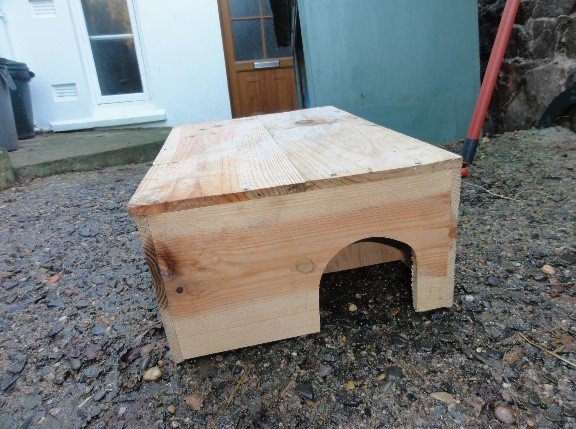Hedgehog-friendly Gardens
Gardening best practices
Garden as organically as you can, let hedgehogs and other wildlife be your pest controllers. Please don’t use chemicals, slug pellets or weedkillers.
Leave at least one corner a little bit “wild” with plenty of ground cover and arching shrubs for them to nest under. You will attract more insects and birds if you plant native species which have nectar rich flowers and berries to eat. The aim is to attract ALL forms of wildlife from the tiniest bug to toads and hedgehogs, so it is most important to give up using harmful chemical sprays.
Pesticides are indiscriminate – you never know what else they may kill or harm – the first time you spray you kill both pests and their predators, but as the pests breed faster, they will get out of control because you will have also destroyed the beneficial insects which feed on them. If you must use something – use organic sprays – they break down faster (e.g. pyrethrum or soft soap) spot treat pest colonies and use the least toxic product you can, move helpful insects like ladybirds before spraying.
Slug Pellets
These can kill hedgehogs, cats and dogs. Remember, hedgehogs may still eat the poisoned slugs. Other methods to try are: beer traps (yoghurt pots or bottles sunk into the ground partly filled with beer), or barrier methods including: lime, soot, fine gravel, forest bark or human hair round your plants, or protect plants with cut off milk cartons or plastic bottles. Half grapefruit skins placed upside down may attract slugs and you can remove them the next day. Parasitic nematodes are very effective in greenhouses, hanging baskets and containers.
If you use weedkillers you destroy the natural homes and food source of many predatory and parasitic insects. Organic gardening aims to recreate a natural balance between pests and predators by attracting beneficial creatures (of all sizes, including hedgehogs) to feed, breed and make their homes in your garden.
Creating a Hedgehog-friendly Garden
Hedgehogs are very agile climbers but if you have a fence or wall round your garden, please cut a hole at the bottom to make access that bit easier! Encourage your neighbours to do the same and create your neighbourhood hedgehog highway!
Provide nest sites by sweeping your grass cuttings and dry leaves under your hedge or shed so they can easily build a winter nest there. Your compost heap is also an inviting place for hedgehogs to nest, but please take care when forking through the pile.
Build a log pile - this will act as a nest site for hedgehogs and also a home for the insects and invertebrates they will eat. You might like to provide additional hedgehog homes either by buying a purpose-built nest box. Or you can build a simple home by propping a board against a wall or shed or putting an upside down crate under a pile of compost, or even putting out an old plastic dustbin on its side. Fill any nest with plenty of dry leaves, grass, hay or straw.
You can also dig a wildlife pond with gently sloping edges, this is a wonderful bonus for all sorts of wild creatures. Please make sure that hedgehogs and other animals can get out easily if they fall in by providing escape ramps made from stones, rough wood or wire netting.
Food & Water
Always provide water on the ground and put out cat or dog food if you have hedgehogs visiting. You can put the food under an upturned wooden box with a 5”/13cm hole cut in one side to discourage cats or dogs from eating it before the hedgehogs get there.
This is especially important in the autumn for young hedgehogs born late in the year, to enable them to gain sufficient weight to survive the winter - they must weigh a minimum of 450g before the weather gets cold. Plastic feeding stations are also a good idea, you can put a brick or piece of wood inside to prevent cats or birds getting to the food or you can make simple feeding stations with a few bricks and paving slabs or an upturned plastic crate















